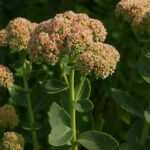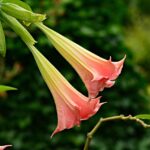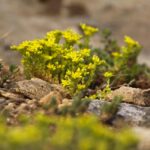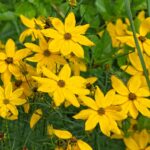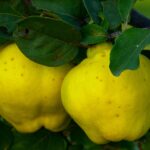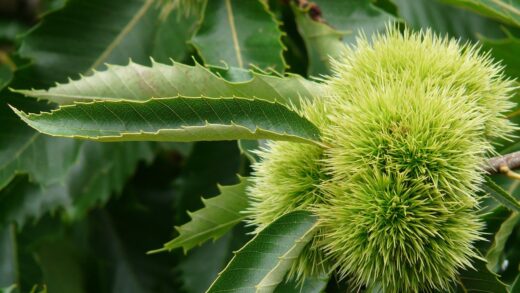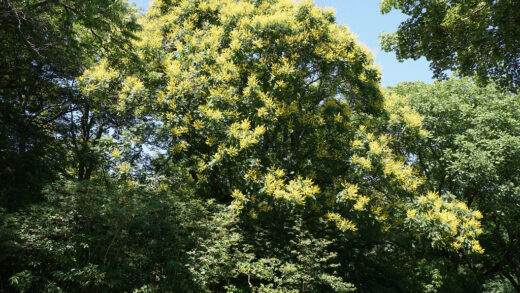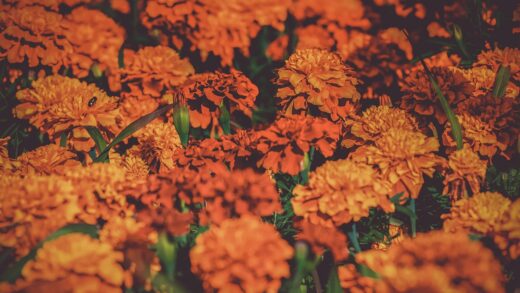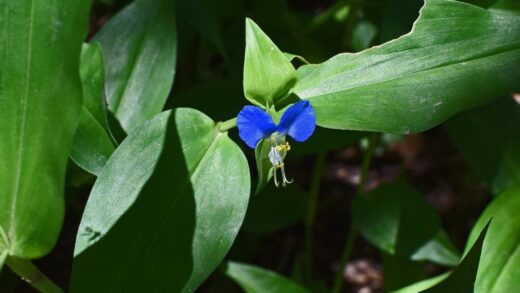One of the most valued characteristics of orpine is its exceptional resilience and general resistance to significant pest and disease problems. This robustness makes it a reliable and low-maintenance choice for a wide range of garden settings. However, like any plant, it is not entirely immune to issues, particularly when it is grown in less-than-ideal conditions. Understanding the potential, albeit infrequent, threats and knowing how to prevent or address them is key to ensuring these perennials remain healthy and vibrant year after year.
The vast majority of problems encountered with orpine are not caused by pathogens or pests, but by cultural practices that are at odds with the plant’s fundamental needs. The most prevalent issue is root and crown rot, which is a direct result of overwatering or planting in soil with inadequate drainage. This succulent is adapted for dry conditions, and its root system cannot tolerate being in waterlogged soil. Prevention through proper site selection and restrained watering is the only effective measure against this fatal condition.
When it comes to pests, orpine is rarely a primary target. However, it can occasionally play host to common garden insects such as aphids and mealybugs. These sap-sucking pests are typically more of a nuisance than a serious threat to the plant’s life. Healthy, vigorous plants are much less likely to suffer from significant infestations. These pests are often attracted to the soft, lush growth that can result from over-fertilization, highlighting the interconnectedness of proper cultural care.
Fungal diseases, such as leaf spots or powdery mildew, can sometimes appear, especially during periods of high humidity or in gardens where plants are overcrowded. These issues are generally cosmetic and rarely cause long-term harm to the plant. The best defense against fungal problems is to provide good air circulation around the plant by giving it adequate space and keeping the surrounding area free of weeds and debris. A proactive approach focused on creating a healthy growing environment is the most effective strategy for managing any potential disease or pest.
The primary threat of rot
The single greatest danger to the health and survival of an orpine plant is rot, which can affect both the roots and the crown (the base of the plant where stems emerge). This issue is not caused by a single aggressive pathogen but is rather a physiological response to an environment that is too wet. When the soil remains saturated, the air spaces become filled with water, depriving the roots of the oxygen they need to function and respire. This leads to the decay of the root tissues, making them vulnerable to secondary infection by common soil-borne fungi and bacteria.
The symptoms of root and crown rot can sometimes be misleading. An affected plant will often wilt, its leaves may turn yellow and drop, and its growth will be stunted. A gardener might mistakenly interpret these signs as a need for more water, thereby exacerbating the problem. The definitive sign of rot is at the base of the plant; the stems will feel soft, mushy, and may pull away easily from the crown. A dark, foul-smelling discoloration at the soil line is also a clear indicator.
Unfortunately, once crown rot is established, the plant is almost always impossible to save. The decay at the plant’s central growing point is systemic and irreversible. This is why prevention is absolutely critical. The entire strategy for preventing rot revolves around ensuring excellent drainage. This begins with selecting a planting site with sandy or gravelly soil, or amending heavy clay soils with grit and organic matter to improve their porosity. Planting on slopes or in raised beds is also an effective preventative measure.
Watering practices are the other half of the prevention equation. Orpine must be allowed to dry out thoroughly between waterings. A ‘soak and dry’ method, where the plant is watered deeply but infrequently, is the ideal approach. It is particularly important to avoid watering during the plant’s winter dormancy period. The combination of cold temperatures and wet soil is a lethal recipe for this succulent perennial, making proper water management the cornerstone of its care.
Common sap-sucking insects
While generally pest-resistant, orpine can sometimes attract sap-sucking insects, with aphids being the most common culprits. These are small, pear-shaped insects that can be green, black, or pink, and they tend to cluster on the most tender parts of the plant, such as new shoots and developing flower buds. They feed by piercing the plant tissue and sucking out the sugary sap. A small population is usually harmless, but a large infestation can cause distorted growth, stippling on the leaves, and a general loss of vigor.
Aphids also excrete a sticky substance called honeydew, which can coat the leaves and stems below their feeding area. This honeydew is not only unsightly but can also promote the growth of sooty mold, a black fungus that, while not directly harming the plant, can interfere with photosynthesis by blocking sunlight. The presence of ants on the plant is often an indicator of an aphid infestation, as ants are known to ‘farm’ aphids for their honeydew.
Managing aphids on a tough plant like orpine is usually straightforward. For minor infestations, a strong jet of water from a garden hose is often enough to dislodge the insects and solve the problem. If they persist, spraying the affected areas with insecticidal soap or a horticultural oil is an effective, low-impact solution. These treatments work by suffocating the soft-bodied insects and must be applied thoroughly, ensuring contact with the pests.
Another less common pest is the mealybug, which appears as a small, white, cottony mass, often tucked into the leaf axils or on the undersides of the leaves. Like aphids, they suck plant sap and can cause stunting and distortion. Due to their waxy coating, they can be slightly more resistant to sprays. For small-scale infestations, spot treatment with a cotton swab dipped in rubbing alcohol is a very effective method of control. For both aphids and mealybugs, avoiding over-fertilizing with nitrogen is a key preventative step, as it prevents the soft, succulent growth these pests prefer.
Fungal leaf diseases
In certain weather conditions, particularly during warm, humid, or rainy spells, orpine can be susceptible to various fungal leaf diseases. These may include leaf spot, rust, or powdery mildew. These diseases are generally not a threat to the plant’s life but can be aesthetically displeasing, causing spots, blemishes, or a powdery coating on the foliage. The damage is typically cosmetic and the plant’s overall health and flowering are rarely impacted significantly.
Leaf spot diseases manifest as distinct spots or blotches on the leaves, which may be brown, black, or tan, sometimes with a yellow halo. Powdery mildew appears as a white or grayish powdery coating on the leaf surfaces. These fungal issues thrive in environments with poor air circulation and high humidity. Crowded plantings, where air cannot move freely between plants, create an ideal microclimate for these pathogens to develop and spread.
The primary strategy for managing fungal diseases is prevention through good cultural practices. Ensure proper spacing between plants when they are installed to allow for adequate airflow as they mature. Dividing overgrown clumps every few years not only propagates the plant but also improves air circulation within the clump itself. Watering at the base of the plant using a soaker hose, rather than with overhead sprinklers, helps to keep the foliage dry and less hospitable to fungal spore germination.
If a fungal disease does appear, the first step is to remove and dispose of the most heavily infected leaves to reduce the source of spores. In most cases, this is all that is needed. For a severe or persistent problem, a fungicide may be used, but this is rarely necessary for a resilient plant like orpine. Improving the environmental conditions is a far more effective and sustainable long-term solution than relying on chemical treatments.
Slugs, snails, and other visitors
Beyond insects and diseases, other garden creatures can occasionally cause minor damage to orpine. Slugs and snails can be a nuisance, especially in the spring when the new, tender shoots are emerging. They use their rasping mouthparts to chew holes in the succulent leaves and can sometimes damage the emerging rosettes. The damage is typically superficial, but in large numbers, they can set back the plant’s early growth.
There are numerous methods for controlling slugs and snails. Creating a barrier of coarse sand, crushed eggshells, or diatomaceous earth around the base of the plant can deter them, as they dislike crawling over sharp, abrasive surfaces. Traps, such as shallow dishes of beer sunk into the soil, can be effective at attracting and drowning them. Iron phosphate-based slug baits are considered a safe and effective option for organic gardening if a chemical control is desired.
Deer and rabbits will occasionally browse on orpine, although it is not usually their first choice. The extent of the damage can vary greatly depending on the local wildlife population and the availability of other, more palatable food sources. If deer or rabbits are a persistent problem in the garden, using repellents can be an effective deterrent. For severe pressure, the only guaranteed solution is physical exclusion through the use of fencing.
It is also worth noting that the sturdy stems and large flower heads of orpine can attract beneficial insects. The nectar-rich flowers are a vital late-season food source for pollinators such as bees, butterflies, and hoverflies. By tolerating minor cosmetic damage from less desirable visitors and avoiding broad-spectrum insecticides, a gardener can support a healthy and balanced garden ecosystem where beneficial insects help to keep pest populations in check naturally.







